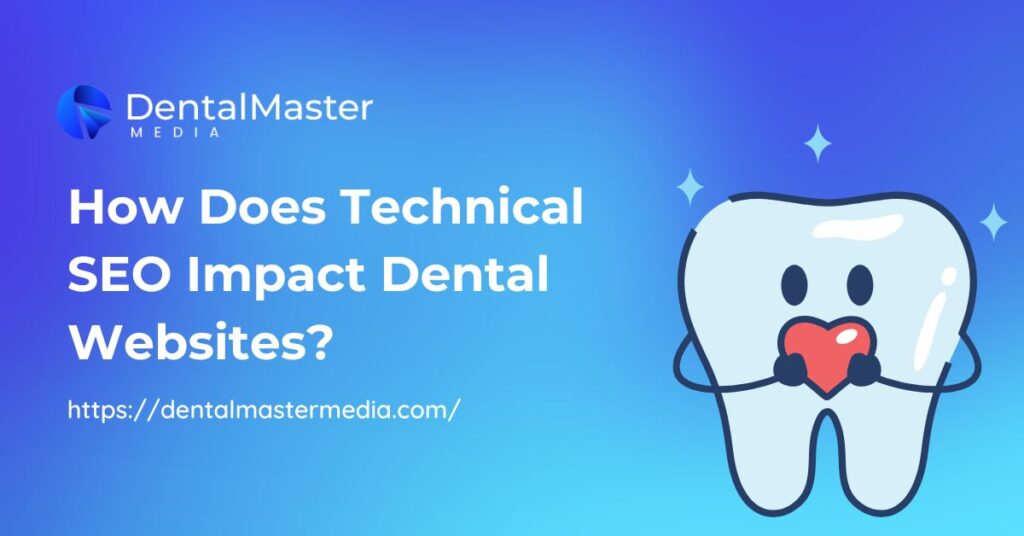Patients judge your practice by what they can see,clear pages, helpful photos, and easy ways to book. Search engines do that too, but they also look under the hood.
Technical SEO covers speed, mobile setup, structure, safety, and crawl access. When these parts work well, your pages appear more often, load smoothly, and make it simple for people to call or book an appointment. Small technical wins add up to real results you can measure.
What Is Technical SEO?
Technical SEO is the behind-the-scenes work that helps search engines crawl, understand, and rank your site. Think of it as your clinic’s foundation and wiring.
If those basics are strong, your content and design have a better chance to perform. Good technical health supports clear indexing, stable layouts, fast pages, and a clean structure that connects related topics.
This creates a friendly path from search to booking, which is the goal of a Professional Dental SEO Company in everyday practice.
Think of it as your site’s engine
Content is the message; technical SEO is the engine that delivers the message quickly and reliably.
If the engine stalls,because of slow code, poor structure, or blocked pages,then even great content struggles to reach patients at the right moment.
How Search Engines Find and Understand Your Pages
Crawling and indexing (robots.txt and sitemaps)
Search engines send bots to discover your pages and store them in an index. Two small files guide that process.
A robots.txt file sets basic access rules so bots go where they should and avoid areas like test folders.
A sitemap lists your important URLs and helps new or updated pages get noticed. Keep the sitemap current and make sure important pages are not blocked by accident.
Site structure and clean URLs
Clear structure helps people and bots. A simple layout of hubs and subpages keeps topics grouped and easy to scan.
Short, readable URLs with hyphens help search engines and visitors guess what a page is about. A page like “/services/dental-implants/” is more helpful than a code-heavy address.
Good structure also supports internal links, which guide visitors from a broad topic to the exact treatment they need.
Duplicate pages and canonical tags
Dental sites sometimes create near-duplicates, such as similar service pages or print versions.
Canonical tags point to the preferred page so signals are not split. When search engines see one clear “main” version, it’s easier for that page to rank.
Speed and Core Web Vitals
Load time and patient behaviour
Slow pages chase people away, especially on phones. When the main content appears quickly and the page feels stable, visitors keep reading, tap buttons, and complete forms.
Core Web Vitals focus on how fast the big content block appears, how steady the layout is while loading, and how quickly the page responds to taps and clicks. Better scores usually mean better engagement and more calls.
Quick wins for faster pages
The easiest speed boosts often start with images. Compress large files and use modern formats so pages load smoothly.
Load images only as people scroll, trim unused CSS and JavaScript, and remove add-ons you don’t really need.
Light pages are easier for both phones and bots. Placing important content near the top also helps visitors act without waiting.
Mobile performance matters
Most searches for dental care happen on phones. Responsive design, simple menus, and large, clear buttons make a big difference.
Keep pop-ups small and easy to close. Test on real devices and adjust anything that slows people down. A page that feels fast and calm builds trust right away.
Mobile-Friendly and Accessible by Design
Responsive layout and easy taps
Your site should adapt to any screen size. Text must be readable without zooming. Buttons need enough space so people don’t tap the wrong thing.
Phone numbers should trigger a call with one tap, and the main call-to-action should sit high on the page so it’s easy to spot.
Basic accessibility that helps everyone
Add alt text that describes images in plain words, especially before-and-after photos and diagrams. Use a clean heading order so screen readers and search engines can follow the flow.
Keep colour contrast strong to help people with low vision. These steps improve user experience and can support better crawl understanding.
Structured Data Built for Dentists
LocalBusiness, Dentist, and Organization schema
Structured data (schema) adds labels that explain your content. Marking up details like your practice name, address, phone, hours, and logo helps search engines show richer details in results.
Using Dentist or Local Business schema clarifies what you do, where you are, and when patients can visit.
This is a key part of Local Dental SEO Services, helping your practice stand out in local searches and attract more patients.

FAQ and video schema
If your page answers common questions,like whitening sensitivity or the steps of a root canal,FAQ schema can help those Q&As appear more clearly.
If you have short patient-education videos, add video schema so search engines can show titles and durations, which may lift clicks.
Reviews schema (use carefully)
If you display reviews on your site, add them honestly and follow platform rules. Consistent review content can help search engines understand patient feedback, but it should be real and verifiable. Keep review widgets lightweight so they don’t slow the page.
Local Signals That Support Visibility
NAP consistency and contact details
Your name, address, and phone should match across your site, your profile listings, and your contact page.
Place this info in the footer and make it easy to copy. Consistency helps search engines trust your details and helps patients reach you without confusion.
Location pages with clear info
If you have multiple clinics, give each its own page. Add a short intro, services offered at that site, hours, contact options, and practical notes like parking tips or nearby landmarks. A little local detail makes the page feel specific and helpful rather than a copy.
Images, Media, and Video the Right Way
Alt text, names, formats, and lazy loading
Rename files before you upload them so they describe what visitors will see. Write alt text that explains the image in simple terms.
Use efficient formats and delay loading images that are lower on the page until they are needed. These habits improve speed and clarity in one move.
Video captions and markup
Many visitors watch videos without sound at first. Captions keep them engaged and help with understanding.
A short written summary below the video supports people who prefer to skim. When a video solves a common problem, pair it with FAQ schema for extra clarity.
Security and Trust
HTTPS and safe forms
Security is a trust signal. Use HTTPS so data is encrypted. Keep your certificate valid. For forms, limit the fields to what you truly need, add spam protection, and show a friendly success message that sets expectations. Link to a privacy policy so people know how their details are handled.
International or Multi-Language?
Hreflang basics
If your site serves more than one language, hreflang tags tell search engines which version to show to which audience.
Correct tags reduce mix-ups and help the right page appear in the right place. Keep translations accurate and consistent across headings, menus, and forms.
Common Technical Problems on Dental Sites
Broken links, redirect chains, thin or duplicate location pages
Pages move, links break, and redirections pile up over time. Broken links waste crawl time and frustrate visitors.
Long redirect chains slow everything down. Review key pages each month and fix errors so the path stays clean.
Also watch for thin or near-duplicate location pages. Give each page its own short intro and details that matter to patients, so it reads as a true match, not a copy.
How to Audit and Track Progress
A simple checkup plan
Check your site on the phone. Make sure pages load fast and menus link to real content. View the source: one H1, clear H2/H3s.
Google your clinic,confirm the phone and hours are right. Test forms and call links to see if messages arrive. Open your sitemap to see key pages listed.
If two pages cover the same topic, set a canonical tag or merge them. For a simple action plan, a team like Dental Master Media can prioritise fixes.
What to watch in your analytics
Focus on a few steady signals. Track which pages bring visits from search and whether visitors take the next step, such as tapping “Call” or submitting a form.
Watch load times over the month and fix pages that slow down. If people leave quickly, look at the first screen and make the next step clearer.
Compare mobile and desktop to spot layout or speed gaps. These small reviews guide practical fixes that support SEO For Dentists without guesswork.
Internal Linking That Guides Patients
Hubs, spokes, and clear next steps
Internal links act like signs inside your clinic, pointing people to the right rooms. Build a service hub that links to each major treatment.
On each treatment page, link to deeper answers like preparation, steps, care after, and payment options. In blog posts, link to the service that solves the problem being discussed.
Add gentle prompts near the top and bottom of each page that help readers contact you, check FAQs, or book. This flow is good for patients and helps search engines map the shape of your site.
Supporting Details: Realistic examples throughout
Compressing heavy hero images makes whitening pages load quicker, keeping visitors engaged and driving more calls.
Adding a clear-aligner guide to the sitemap helps it index faster and show related queries sooner. Using a canonical tag on duplicate crown pages unifies signals for stronger results.
Placing the call button above the fold on mobiles boosts taps. Small, repeatable steps like these bring real gains across your site.
Conclusion
Technical SEO makes your site easier to discover, faster to use, and clearer to act on. Clean structure, fast media, mobile-friendly layouts, safe forms, and helpful schema all work together to guide patients from a search result to a booked visit.
Start with small checks each week, review the data you already have, and keep improving the parts that help visitors move forward.
If you’d like a friendly walkthrough or a practical audit plan, the team at Dental Master Media can help you map the next steps.

Suraj Rana is the owner of Dental Master Media and a leading expert in SEO for dental practices. With a passion for dental marketing, he has successfully helped numerous dental clinics climb the search engine ranks. Suraj’s expertise makes him a go-to resource for effective, results-driven dental marketing.

